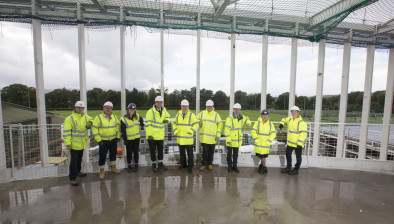Architect joins Stirling University dementia design team

The Dementia Services Development Centre (DSDC) has appointed architect Martin Quirke to its design team.
Based in the Iris Murdoch Building at the University of Stirling, the DSDC is an international centre of knowledge and expertise dedicated to improving the lives of people with dementia.
For over 25 years the centre has been using research and practice from around the world to provide up to date resources on all aspects of dementia, from the design of care environments to training and policy.
The DSDC has now strengthened its design team with the addition of Martin Quirke.
The DSDC said: “The importance of design and architecture for reducing disability in people who live with dementia has never been so high in the agenda of care providers. The DSDC has research that shows which basic principles make a difference to how independent people can be, and translating that research into action is the next big challenge.
“Dementia friendly design is a basic human right for people with dementia. But it also makes life easier for those who care for them. Of course in care home settings there is the advantage of reduced staff costs and reduced adverse incidents, but in the person’s own home the need is just as great.”
Martin’s 20 years’ experience in architecture has been divided between Australia, Ireland and the UK. He is a graduate of both Trinity College Dublin and Dublin Institute of Technology, and is close to completing a PhD on design for dementia from University of Newcastle (Australia).
Having worked across a broad spectrum of project types, from housing to public buildings, Martin’s strongest area of expertise is design for ageing, especially residential aged care communities. In professional practice, university teaching, and research, he promotes both sustainable and inclusive design. He previously built his own house, unobtrusively incorporating both passive sustainable design, and dementia design principles.
With its fresh modern design, few people realise the future proofing, resource saving, and enabling design that the house contains - Martin advocates that this is how good design should be.
The DSDC added: “Determined to expand design for cognitive and age-related impairment beyond its traditional domain of care environments and out into the wider community, Martin is adamant that design provision for dementia enablement should be incorporated into all physical environments.
“We already do this for people with physical impairments, such as those in wheelchairs, so it’s about time that into all of our homes, streets, shops, theatres, and other public spaces become enabling and inclusive for people with cognitive impairment.”
Martin’s PhD research indicates that early consideration of dementia design principles can have a significant impact on the cognitive accessibility of buildings. In particular, his analysis of building floor-plan layouts suggests that the overall dementia-enabling quality of the final building can be heavily influenced by even the earliest design sketches. He expects to complete this research in 2017.























